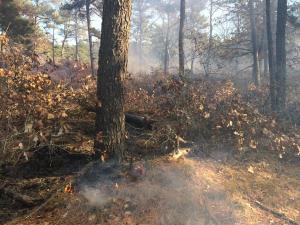Eco-Smart Information
Ticks and Lyme Disease
Ticks are a common concern on Cape Cod. It’s important to be informed on the best ways to prevent tick bites and what to do if you’re bitten. (Continue here...)
Invasive Species Guide
This guide was created by the Town of Orleans and contains information about invasive species commonly found on Cape Cod. Read the Mashpee Invasive Species Guide.
New England Cottontails
New England Cottontail were once found throughout New England, including Massachusetts, Rhode Island, Connecticut, and parts of New York, Vermont, New Hampshire, and Maine. However, since the 1960s these rabbits have faced an extreme decline in population and now are only found in 25% of their previous habitat area. Cape Cod is still home to the New England Cottontail, but the populations have decreased. New England Cottontails have been found on the Mashpee National Wildlife Refuge and other Mashpee conservation lands. These cottontails prefer young forests, generally less than 25 years old, that are predominantly low thick vegetation for them to hide in. Once there are mature trees the low growing shrubs decrease. New England Cottontails eat plants, leaves, bark, and twigs. Their decline is due mostly to less habitat, which has been caused by development, tree growth in past habitats, and encroachment of invasive species. Additionally, the New England Cottontails are being out competed by the Eastern Cottontail, which is a similar species that is better able to avoid predators in more areas. The Eastern Cottontail was brought to New England between the 1900s and 1960s. The two species look so similar DNA tests are usually done to differentiate between the two. Currently, New England Cottontails are being tracked on Cape Cod by the Fish and Wildlife Service, the Massachusetts Military Reservation, and the Wampanoag Tribe. Additionally, prescribed burns have been carried out on conservation land to remove mature trees and allow regrowth of low shrubs. Read more here.

Coming soon: Herring!
Any time now the herring will start to appear in the rivers, completing their journey to freshwater lakes and ponds to spawn. (Continue here...)
Atlantic White Cedar Swamps
Within Mashpee’s conservation lands lay pockets of vegetation that seem to be out of a prehistoric era. Shades of green and brown dominate a scene featuring tall evergreens with moss covered roots showing above standing pools of water. (Continue here...)

